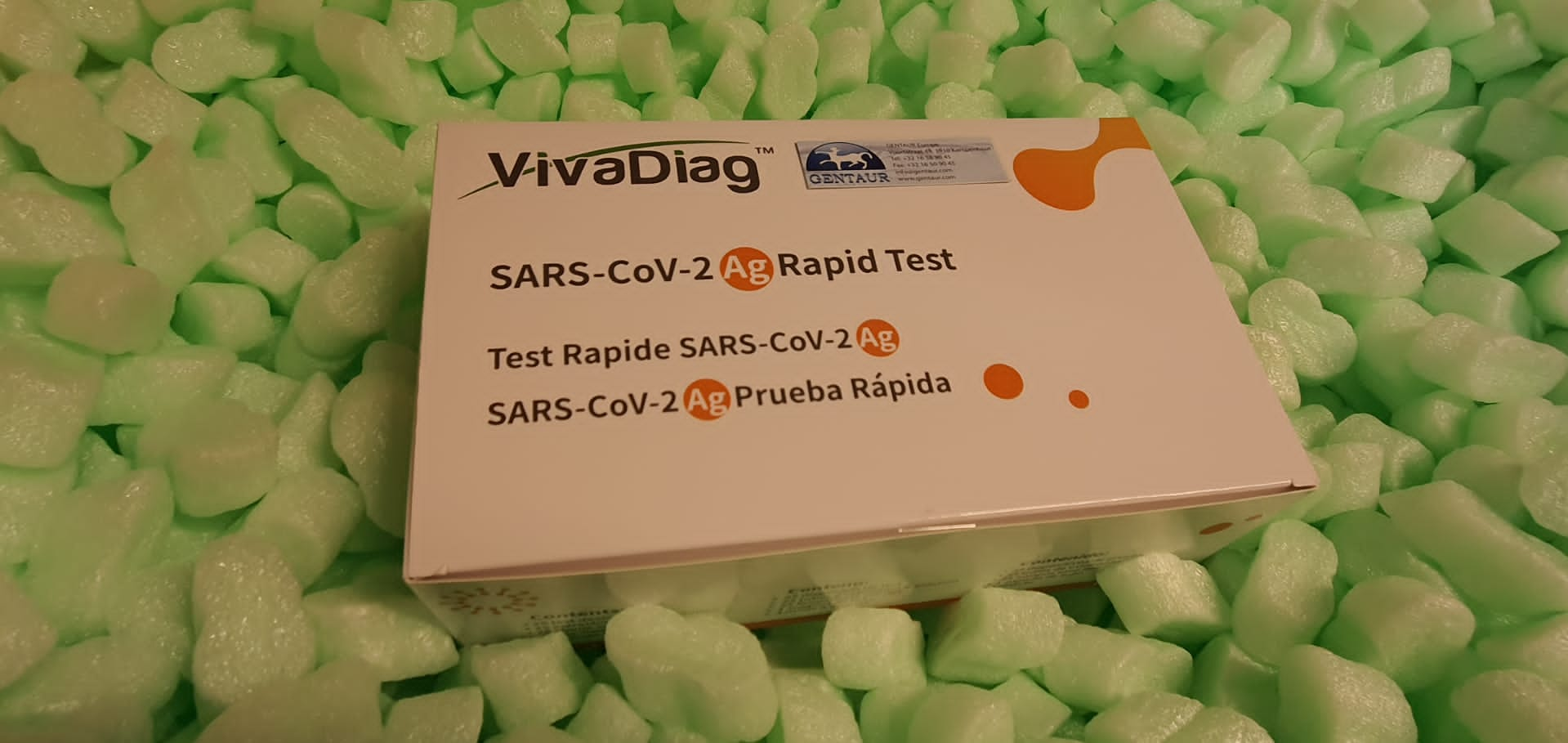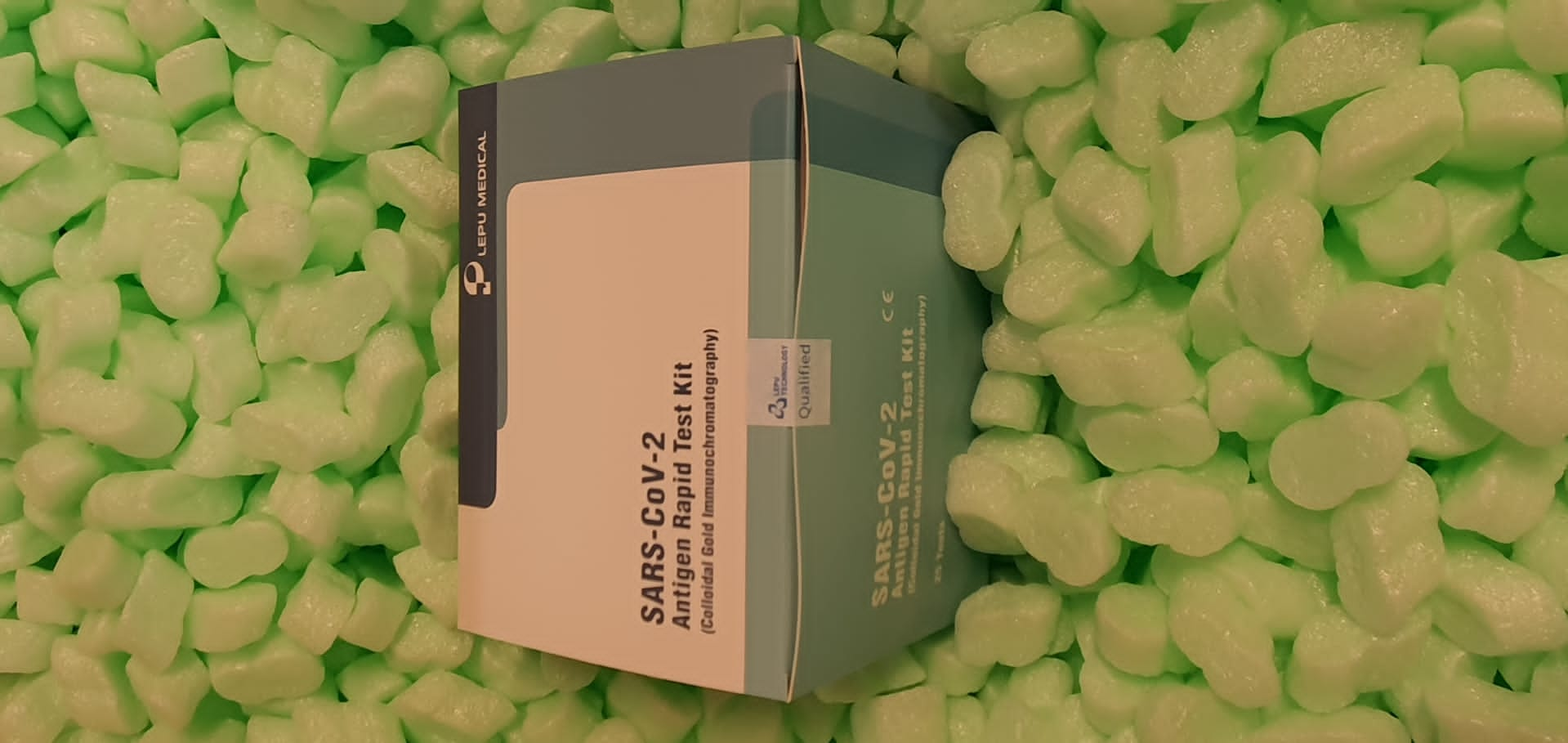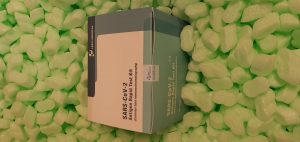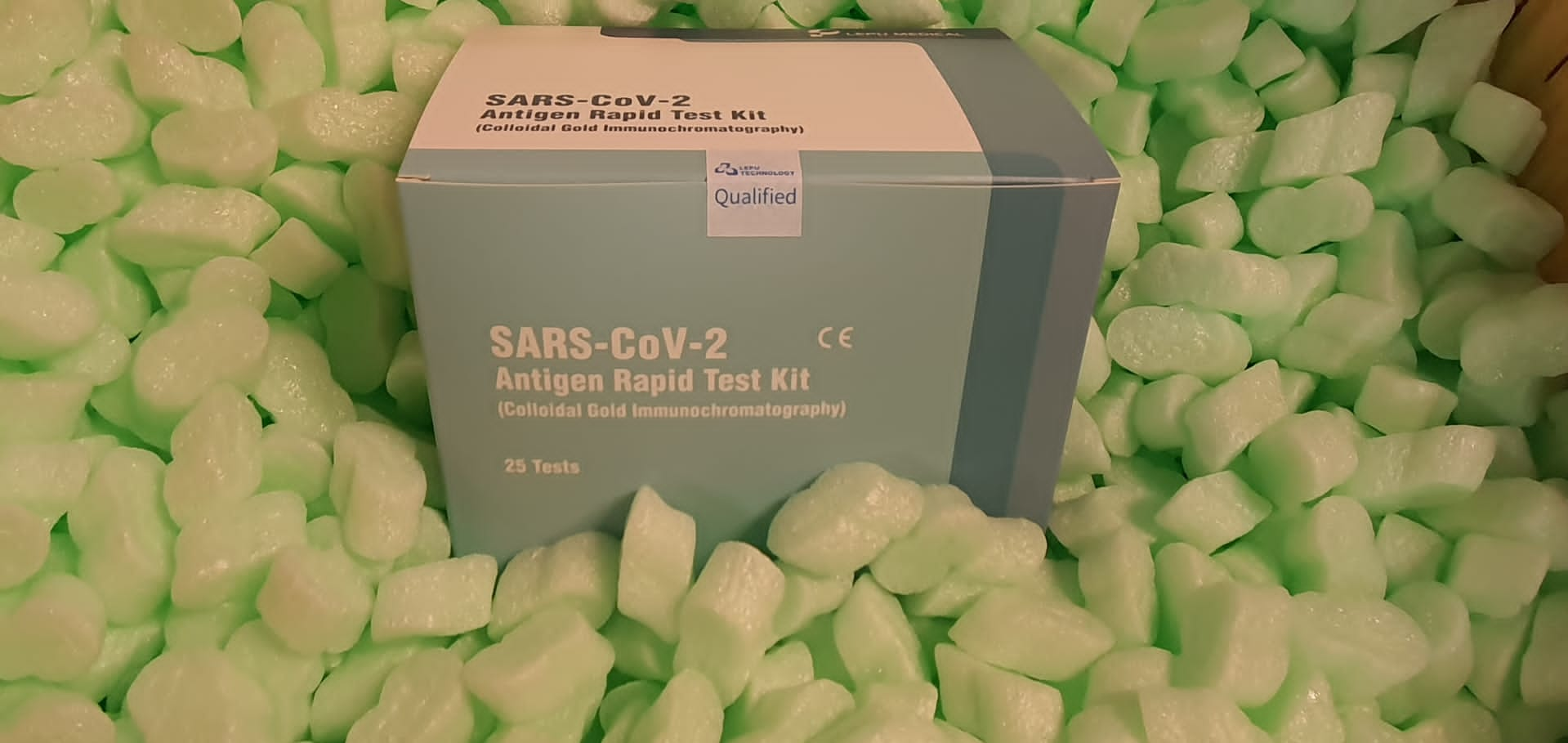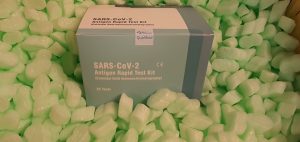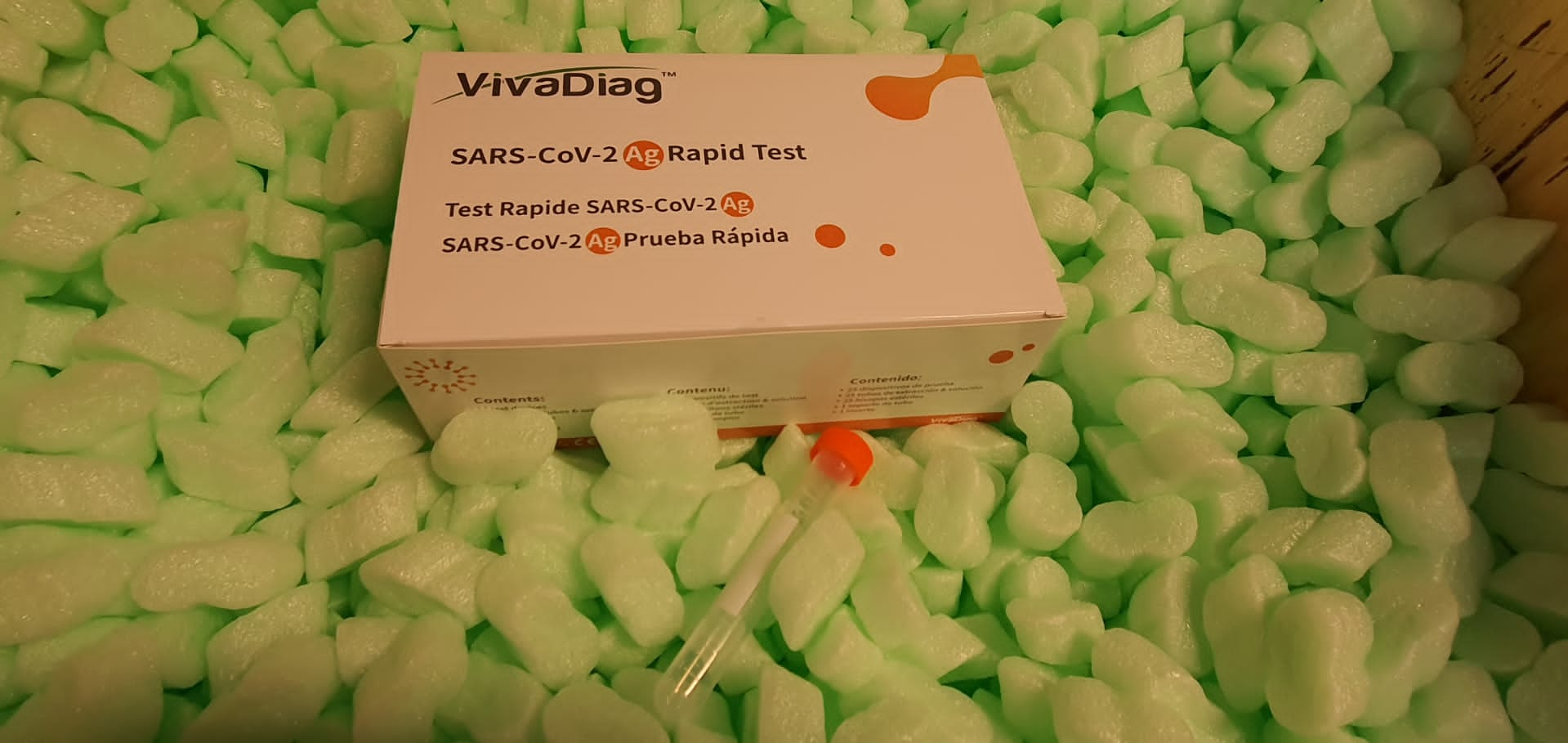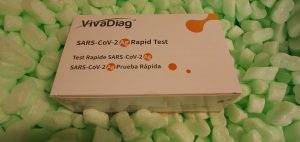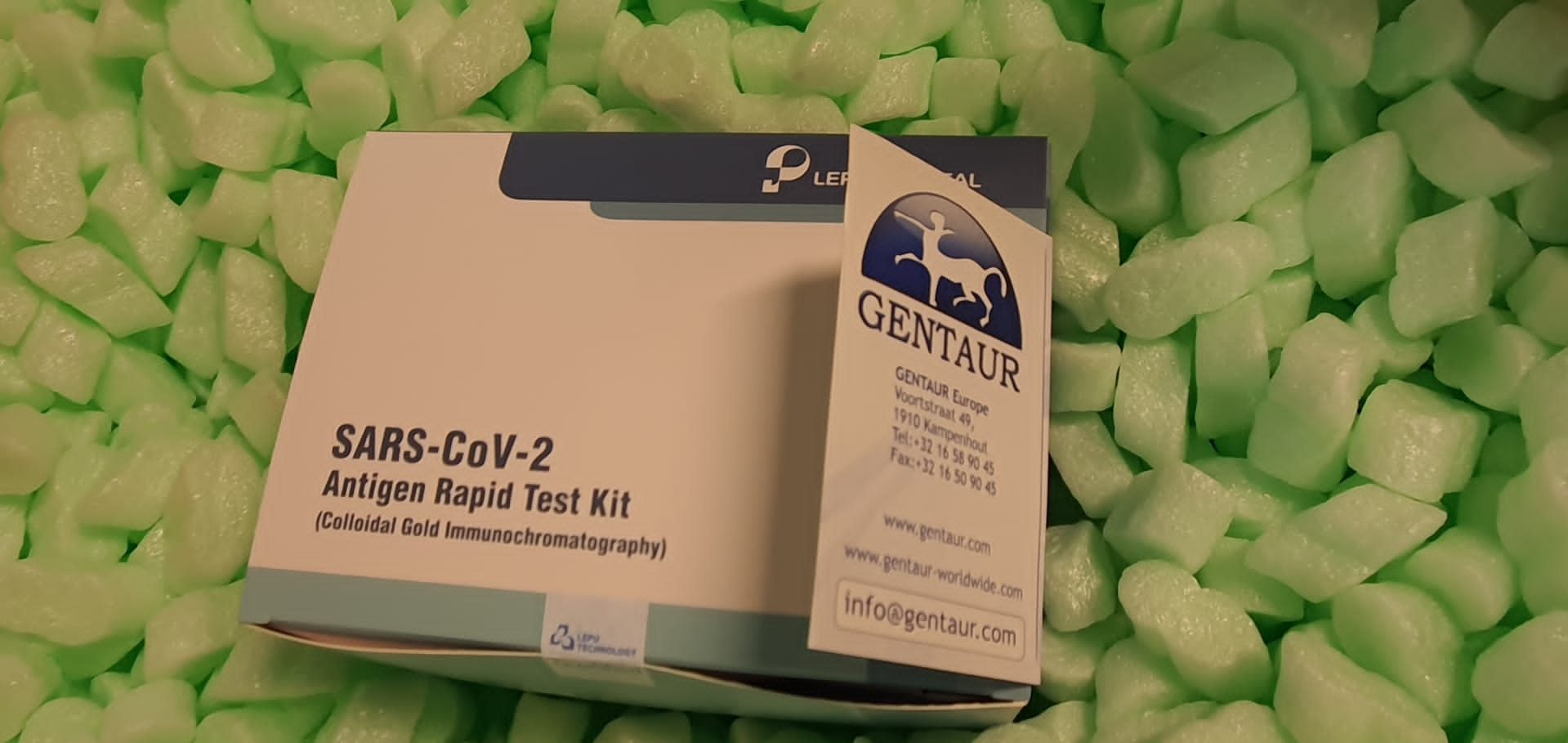| References | Alföldi J, Di Palma F, Grabherr M, Williams C, Kong L, Mauceli E, Russell P, Lowe CB, Glor RE, Jaffe JD, Ray DA, Boissinot S, Shedlock AM, Botka C, Castoe TA, Colbourne JK, Fujita MK, Moreno RG, ten Hallers BF, Haussler D, Heger A, Heiman D, Janes DE 2011. The genome of the green anole lizard and a comparative analysis with birds and mammals. Nature 477(7366):587-91 – get paper hereAllen, Morrow J. 1932. A survey of the Amphibians and reptiles of Harrison County, Mississippi. American Museum Novitates (542): 1-20 – get paper hereAndersson, L.G. 1900. Catalogue of Linnean type-specimens of Linnaeus’s Reptilia in the Royal Museum in Stockholm. [type catalogue] Bihang till Konglika Svenska Vetenskaps-Akademiens. Handlingar. Stockholm. (4) 26 (1): 1-29. – get paper hereArnold, Debbie M. 1997. Geographic Distribution. Anolis carolinensis carolinensis. Herpetological Review 28 (1): 49 – get paper hereBartlett, R. D. & Bartlett, P. 1999. A Field Guide to Texas Reptiles and Amphibians. Gulf Publishing Co., Houston, Texas, 331 pp.Birkhead, Roger and Mark C. Benny. 2014. Anolis carolinensis (green anole) predation. Herpetological Review 45 (1): 123-124 – get paper hereBishop, D.C. & Echternacht, A.C. 2004. Emergence behavior and movements of winter-aggregated Green Anoles (Anolis carolinensis) and the thermal characteristics of their crevices in Tennessee. Herpetologica 60 (2): 168-177 – get paper hereBocourt, M. E. 1873. In: A. Duméril, M. F. Bocourt, and F. Mocquard, (1870-1909), Etudes sur les reptiles, p. i-xiv; In Recherches Zoologiques pour servir a l’Histoire de Ia Faune de l’Amérique Centrale et du Mexique. Mission Scientifique au Mexique et dans l’Amérique Ce Imprimerie Impériale, Paris, Livr. 2-15, pp. 33-860. – get paper hereBoistel, Renaud;, Anthony Herrel; Renaud Lebrun, Gheylen Daghfous, Paul Tafforeau, Jonathan B. Lososô and Bieke Vanhooydonck|| 2011. Shake Rattle and Roll: The Bony Labyrinth and Aerial Descent in Squamates. Integrative and Comparative Biology, doi:10.1093/icb/icr034 – get paper hereBonetti, Mathilde 2002. 100 Sauri. Mondadori (Milano), 192 pp.Boulenger, G.A. 1885. Catalogue of the lizards in the British Museum (Natural History). Vol. 2, Second edition. London, xiii+497 pp. – get paper hereBourgeois, Yann; Robert Ruggiero, Joseph Manthey, Stephane Boissinot 2018. Recent secondary contacts, background selection and variable recombination rates shape genomic diversity in the model species Anolis carolinensis. BioRxiv – get paper hereBrothers, David. 2013. Anolis carolinensis (green anole) feeding behavior. Herpetological Review 44 (2): 313 – get paper hereBuden, Donald W. & Danko Taboroši 2016. Reptiles of the Federated States of Micronesia. Island Research and Education Initiative, 311 pp. – get paper hereBurt, Charles E. 1935. Further records of the ecology and distribution of amphibians and reptiles in the middle west. American Midland Naturalist 16 (3): 311-336 – get paper hereButh, Donald G.;Gorman, George C.;Lieb, Carl S. 1980. Genetic divergence between Anolis carolinensis and its Cuban progenitor, Anolis porcatus. Journal of Herpetology 14 (3): 279-284 – get paper hereButton, S.T., Greenberg, C.H. & Austin, J.D. 2017. Anolis carolinensis (Green Anole) Diet. Herpetological Review 48 (3): 633-634. – get paper hereCampbell-Staton, Shane C.; Anna Bare, Jonathan B. Losos et al. 2018. Physiological and regulatory underpinnings of geographic variation in reptilian cold tolerance across a latitudinal cline. Molecular Ecology – get paper hereCampbell-Staton, Shane C.; Scott V. Edwards, andJonathan B. Losos 2016. Climate-mediated adaptation after mainland colonization of an ancestrally subtropical island lizard, Anolis carolinensis. J Evol Biol, DOI: 10.1111/jeb.12935 – get paper hereCampbell‐Staton, Shane C.; Rachel M. Goodman; Niclas Backström; Scott V. Edwards; Jonathan B. Losos & Jason J. Kolbe 2012. Out of Florida: mtDNA reveals patterns of migration and Pleistocene range expansion of the Green Anole lizard (Anolis carolinensis) Ecology and Evolution 2(9): 2274–2284 – get paper hereCooper Jr., W.E. 2005. Duration of movement as a lizard foraging movement variable. Herpetologica 61 (4): 363-372 – get paper hereCrother, B. I. (ed.) 2012. Standard Common and Current Scientific Names for North American Amphibians, Turtles, Reptiles, and Crocodilians, Seventh Edition. Herpetological Circular 39: 1-92Cuvier & Voigt, F.S. 1832. Das Thierreich, geordnet nach seiner Organisation […] Nach der zweiten Ausgabe übersetzt und durch Zusätze erweitert von F.S. Voigt. Band 2. Leipzig, Brockhaus, 539 pp. – get paper hereDaudin 1802. Histoire Naturelle, Générale et Particulière des Reptiles, Vol. 4. F. Dufart, Paris.Dill, A. K., Sanger, T. J., Battles, A. C. and Johnson, M. A. 2013. Sexual dimorphisms in habitat-specific morphology and behavior in the green anole lizard. Journal of Zoology, 290: 135–142 – get paper hereDixon, James R. 2000. Amphibians and reptiles of Texas, second edition. Texas A&M University Press, 421 pp.Doan, Tiffany M.; Brian G. Devlin and Kevin C. Greene 2019. Malaria Infection is Lower in Invasive Anoles than Native Anoles in Central Florida, USA Journal of Herpetology 51 (1): 22 – get paper hereDuméril, A. M. C. and G. Bibron. 1837. Erpétologie Générale ou Histoire Naturelle Complete des Reptiles. Vol. 4. Libr. Encyclopédique Roret, Paris, 570 pp. – get paper hereDundee, H.A., & Rossman, D.A. 1989. The amphibians and reptiles of Louisiana. Louisiana St. Univ. Press, Baton Rouge 300 pp.Fitzinger, L. 1843. Systema Reptilium, fasciculus primus, Amblyglossae. Braumüller et Seidel, Wien: 106 pp. – get paper hereFonseca, Érica, Ricardo Marques and Moacir Santos Tinoco. 2014. Geographical Distribution: Anolis carolinensis (green anole). Herpetological Review 45 (4): 658 – get paper hereGamble, Tony; David Zarkower 2014. Identification of sex-specific molecular markers using restriction site associated DNA sequencing (RAD-seq). Molecular Ecology Resources, DOI: 10.1111/1755-0998.12237 – get paper hereGeorge, Steven G. 1994. Anolis carolinensis (green anole). USA: Louisiana. Herpetological Review 25 (4): 164 – get paper hereGibbons, Whit; Judy Greene, and Tony Mills 2009. LIZARDS AND CROCODILIANS OF THE SOUTHEAST. University of Georgia Press, 240 pp.Giovannotti, M.; & V. A. Trifonov, & A. Paoletti & I. G. Kichigin & P. C. M. O’Brien & F. Kasai & G. Giovagnoli & B. L. Ng & P. Ruggeri & P. Nisi Cerioni & A. Splendiani & J. C. Pereira, & E. Olmo & W. Rens & V. Caputo Barucchi, & M. A. Ferguson-Smit 2016. New insights into sex chromosome evolution in anole lizards (Reptilia, Dactyloidae) Chromosoma 126 (2): 245–260 | Cite as DOI 10.1007/s00412-016-0585-6 – get paper hereGodfrey, S.T., Duberstein, J.A., Mota, J. & Moore, W. 2018. Anolis carolinensis (Green Anole) Nest sites and communal nesting. Herpetological Review 49 (1): 115. – get paper hereGoldberg, Stephen R. and Fred Kraus 2017. Reproduction in the Green Anole, Anolis carolinensis (Squamata: Dactyloidae), from Hawaii Current Herpetology Feb 2018, Vol. 37, No. 1: 69-74. – get paper hereGravatt, Dennis 2016. Anolis carolinensis (Green Anole) Diet and perch site Herpetological Review 47 (4): 664-665 – get paper hereGray, J. E. 1845. Catalogue of the specimens of lizards in the collection of the British Museum. Trustees of die British Museum/Edward Newman, London: xxvii + 289 pp. – get paper hereGutsche, A. 2013. Der Rotkehlanolis. Terraria-Elaphe 2013 (3): 74-75 – get paper hereGuyer, Craig; Mark A. Bailey, and Robert H. Mount 2018. Lizards and snakes of Alabama. University of Alabama Press – get paper hereHARRISON, ALEXIS; STEVEN POE 2012. Evolution of an ornament, the dewlap, in females of the lizard genus Anolis. Biological Journal of the Linnean Society 106: 191–201 – get paper hereHelmus, Matthew R.; Jocelyn E. Behm, Wendy A.M. Jesse, Jason J. Kolbe,Jacintha Ellers, and Jonathan B. Losos 2016. EXOTICS EXHIBIT MORE EVOLUTIONARY HISTORY THAN NATIVES: A COMPARISON OF THE ECOLOGY AND EVOLUTION OF EXOTIC AND NATIVE ANOLE LIZARDS. In: Invasion Genetics: The Baker and Stebbins Legacy, First Edition. Edited by Spencer C. H. Barrett, Robert I. Colautti, Katrina M. Dlugosch, and Loren H. Rieseberg; John Wiley & Sons, pp. 122-138 (publication year given as 2017 in the book) – get paper hereHill, R. L. 2012. Geographic distribution: Anolis carolinensis (green anole). Herpetological Review 43: 304Hilliard, T. J., Salmon, G. T. & Johnson, M. A. 2012. Anolis carolinensis (green anole) attempted saurophagy. Herpetological Review 43: 640-641Hudnall, Aaron, Andrew R. MacLaren, Shawn F. McCracken and Michael R. J. Forstner. 2016. Geographic Distribution: Anolis carolinensis (Green Anole). Herpetological Review 47 (1): 80 – get paper hereHusak, Jerry F. 1996. Geographic Distribution. Anolis carolinensis. Herpetological Review 27 (4): 210 – get paper hereIrschick, D.J. Austin, C.C.; Petren, K.; Fisher, R.N.; Losos, J.B. & Ellers, O. 1996. A comparative analysis of clinging ability among pad-bearing lizards. Biol. J. Linn. Soc. 59: 21-35 – get paper hereJaffe, Alexander L.; Shane C. Campbell-Staton and Jonathan B. Losos 2015. Geographical variation in morphology and its environmental correlates in a widespread North American lizard, Anolis carolinensis (Squamata: Dactyloidae). Biological Journal of the Linnean Society, DOI: 10.1111/bij.12711 – get paper hereJanes, Daniel E.; Christopher L. Organ, Matthew K. Fujita, Andrew M. Shedlock, and Scott V. Edwards 2010. Genome Evolution in Reptilia, the Sister Group of Mammals. Annu. Rev. Genomics Hum. Genet.11: 239–64 – get paper hereJensen, John B.; Carlos D. Camp, Whit Gibbons, & Matt J. Elliott 2008. Amphibians and reptiles of Georgia. University of Georgia Press, 575 pp.Jenssen, T. A.;Congdon, J. D.;Fischer, R. U.;Estes, R.;Kling, D.;Edmands, S. 1995. Morphological characteristics of the lizard Anolis carolinensis from South Carolina. Herpetologica 51: 401-411 – get paper hereJenssen, Thomas A; Sarah Garrett, and William J Sydor 2012. Complex Signal Usage By Advertising Male Green Anoles (Anolis carolinensis): A Test of Assumptions. Herpetologica 68 (3): 345-357. – get paper hereJones, Zachary M. and and Bruce C. Jayne 2012. The Effects of Sound on the Escape Locomotor Performance of Anole Lizards. Journal of Herpetology 46 (1): 51-55. – get paper hereKamath, Ambika; Yoel E. Stuart, and Todd S. Campbell 2013. Behavioral Partitioning by the Native Lizard Anolis carolinensis in the Presence and Absence of the Invasive Anolis sagrei in Florida. Breviora (535): 1-10. – get paper hereKatsu, Y. et al. 2009. From Reptilian Phylogenomics to Reptilian Genomes: Analyses of c-Jun and DJ-1 Proto-Oncogenes. Cytogenet Genome Res 127: 79-93Kichigin, I.G.;Massimo Giovannotti, Alex I. Makunin, Bee L. Ng, Marsel R. Kabilov, Alexey E. Tupikin, Vincenzo Caputo Barucchi, Andrea Splendiani, Paolo Ruggeri, Willem Rens, Patricia C. M. O’Brien, Malcolm A. Ferguson-Smith, Alexander S. Graphodatsk 2016. Evolutionary dynamics of Anolis sex chromosomes revealed by sequencing of flow sorting-derived microchromosome-specific DNA Mol Genet Genomics, doi:10.1007/s00438-016-1230-z – get paper hereKöhler, G. 2011. Taxonomic status of Anolis baccatus Bocourt 1873 (Reptilia, Squamata, Polychrotidae). Zootaxa 3015: 61–65 – get paper hereKordis, D. 2009. Transposable Elements in Reptilian and Avian (Sauropsida) Genomes. Cytogenet Genome Res 127: 94-111Kraus, Fred 2015. Impacts from Invasive Reptiles and Amphibians. Annual Review of Ecology, Evolution, and Systematics 46: 75 – 97 – get paper hereKrysko, K.K.; Enge, K.M.; Donlan, E.M.; Golden, E.Z.; Burgess, J.P. & Larson, K.W. 2009. THE NON-MARINE HERPETOFAUNA OF KEY BISCAYNE, FLORIDA. Herp. Cons. Biol. 5 (1):132-142 – get paper hereKusumi, Kenro and Jeanne Wilson-Rawls 2010. Development of functional genomic resources, a gene expression database, and cell culture reagents for molecular analysis of Anolis carolinensis: . Anolis Newsletter VI: 91 – get paper hereLiner, Ernest A. 2007. A CHECKLIST OF THE AMPHIBIANS AND REPTILES OF MEXICO. Louisiana State University Occasional Papers of the Museum of Natural Science 80: 1-60 – get paper hereLink, H.F. 1807. Beschreibung der Naturalien-Sammlung der Universität zu Rostock, zweite Abtheilung. Adlers Erben, Rostock, pp. 51-100 – get paper hereLisachov, A. P., Makunin, A. I., Giovannotti, M., Pereira, J. C., Druzhkova, A. S., Caputo Barucchi, V., Trifonov, V. A. 2019. Genetic Content of the Neo-Sex Chromosomes in Ctenonotus and Norops (Squamata, Dactyloidae) and Degeneration of the Y Chromosome as Revealed by High-Throughput Sequencing of Individual Chromosomes. Cytogenetic and Genome Research – get paper hereLjustina, O. and J. T. Stroud 2017. Anolis carolinensis (American Green Anole) Possible kleptothermy. Herpetological Review 48 (2): 434-435 – get paper hereLOMBARDO,MICHAEL P. & PATRICK A. THORPE 2008. Digit Ratios in Green Anolis Lizards (Anolis carolinensis). Anatomical Record 291:433–440Lönnberg, Einar 1894. Notes on reptiles and batrachians collected in Florida in 1892 and 1893. Proc. US Natl. Mus. 17 (1003): 317-339 – get paper hereLosos, Jonathan B.;Irschick, Duncan J.;Schoener, Thomas W. 1994. Adaptation and constraint in the evolution of specialization of Bahamian Anolis lizards. Evolution 48 (6): 1786-1798 – get paper hereMacedonia, Joseph M.; David L. Clark, Lauren E. Cherry, Natasha E. Mohamed, and Bradley W. Bartel 2015. Comparison of Headbob Displays in Gray-Dewlapped and Red-Dewlapped Populations of Green Anoles (Anolis carolinensis). Herpetologica Jun 2015, Vol. 71, No. 2: 117-124. – get paper hereMallatt, Jon and Christopher J. Winchell 2007. Ribosomal RNA genes and deuterostome phylogeny revisited: More cyclostomes, elasmobranchs, reptiles, and a brittle star. Molecular Phylogenetics and Evolution 43 (3): 1005-1022 – get paper hereMalone, John H.;Davis, Wayne 1998. Geographic distribution. Anolis carolinensis. Herpetological Review 29 (4): 248 – get paper hereManthey, U. 1984. 9 Jahre Anolis – Zucht, Teil 1: Erfahrungen und Ergebnisse. Sauria 6 (2): 31-34 – get paper hereMckeown, Sean 1996. A Field Guide to Reptiles and Amphibians in the Hawaiian Islands. Diamond Head Publishing, Inc., Los Osos, CA,McMillan, David M. and Duncan J. Irschick 2010. Experimental Test of Predation and Competition Pressures on the Green Anole (Anolis carolinensis) in Varying Structural Habitats. Journal of Herpetology 44 (2): 272–278 – get paper hereMichaud, Edward J.;Echternacht, Arthur C. 1995. Geographic variation in the life history of the lizard Anolis carolinensis and support for the pelvic constraint model. Journal of Herpetology 29 (1): 86-97 – get paper hereModi, W.S. & Crews, D. 2005. Sex chromosomes and sex determination in reptiles. Curr Opin Genet Dev 15: 660-665Montuelle, Stéphan; Gheylen Daghfous, and Vincent Bels 2010. Integration of trophic and locomotor performance during prey-capture behavior in Anolis carolinensis: effects of the substrate diameter. Anolis Newsletter VI: 152-162 – get paper hereNicholson, K. E., R. E. Glor, J. J. Kolbe, A. Larson, S. B. Hedges, and J. B. Losos 2005. Mainland colonization by island lizards. Journal of Biogeography 32: 929–938 – get paper hereNicholson, K.E. 2002. Phylogenetic analysis and a test of the current infrageneric classification of Norops (beta Anolis). Herpetological Monographs 16: 93-120 – get paper hereNICHOLSON, KIRSTEN E.; BRIAN I. CROTHER, CRAIG GUYER & JAY M. SAVAGE 2012. It is time for a new classification of anoles (Squamata: Dactyloidae). Zootaxa 3477: 1–108 – get paper hereNICHOLSON, KIRSTEN E.; BRIAN I. CROTHER, CRAIG GUYER & JAY M. SAVAGE 2018. Translating a clade based classification into one that is valid under the international code of zoological nomenclature: the case of the lizards of the family Dactyloidae (Order Squamata). Zootaxa 4461 (4): 573–586 – get paper hereNorval, Gerrut; Jean-Jay Mao and Stephen R. Goldberg. 2012. A record of a green anole (Anolis carolinensis Voigt 1832), from the wild in southwestern Taiwan. Herpetology Notes 6: 95-97 – get paper hereOliver, James A. 1951. “Gliding” in amphibians and reptiles, with a remark on an arboreal adaptation in the lizard, Anolis carolinensis carolinensis Voight. American Naturalist 85 (822): 171-176 – get paper herePalmer, W.M. & Braswell, A.L. 1995. Reptiles of North Carolina. Univ. North Carolina PressPansza, Janelle M. and Robert Powell 2005. Geographic Distribution: Anolis carolinensis (Green Anole). Herpetological Review 36 (2):201. – get paper herePauly, Gregory B. and David B. Borthwick. 2015. Geographic Distribution: Anolis carolinensis (green anole). Herpetological Review 46 (4): 567 – get paper herePetzing, John; Phillips, Christopher A. 1998. Geographic Distribution. Anolis carolinensis. Herpetological Review 29 (2): 110 – get paper herePierson, T. 2012. Geographic distribution: Anolis carolinensis (green anole). Herpetological Review 43: 304Poe, S. 2004. Phylogeny of anoles. Herpetological Monographs 18: 37-89 – get paper herePoe, S. 2013. 1986 Redux: New genera of anoles (Squamata: Dactyloidae) are unwarranted. Zootaxa 3626 (2): 295–299 – get paper herePoe, Steven; Adrián Nieto-Montes de Oca, Omar Torres-Carvajal, Kevin de Queiroz, Julián A. Velasco, Brad Truett, Levi N. Gray, Mason J. Ryan, Gunther Köhler, Fernando Ayala-Varela, and Ian Latella 2018. Comparative Evolution of an Archetypal Adaptive Radiation: Innovation and Opportunity in Anolis Lizards. The American Naturalist – get paper herePoe, Steven; Adrián Nieto-montes de Oca, Omar Torres-carvajal, Kevin De Queiroz, Julián A. Velasco, Brad Truett, Levi N. Gray, Mason J. Ryan, Gunther Köhler, Fernando Ayala-varela, Ian Latella 2017. A Phylogenetic, Biogeographic, and Taxonomic study of all Extant Species of Anolis (Squamata; Iguanidae). Syst Biol 2017: syx029 – get paper hereRajeev, M. & Rajeev, M. 2012. Geographic distribution: Anolis carolinensis (green anole). Herpetological Review 43: 304Rauh, J. 2006. Der Rotkehlanolis (Anolis carolinensis). Natur und Tier Verlag (Münster), 64 pp. – get paper hereRichardson, J. 1837. Report on North American Zoology. 6th Ann. Rept. British Assoc. 6: 121-224 [1836]Román-Palacios, C., Tavera, J., & Castañeda, M. del R. 2018. When did anoles diverge? An analysis of multiple dating strategies. Molecular Phylogenetics and Evolution, 127, 655–668 – get paper hereRovatsos M, Vukić J, Lymberakis P, Kratochvıl L. 2015. Evolutionary stability of sex chromosomes in snakes. Proc. R. Soc. B 282: 20151992 – get paper hereRovatsos, Michail; Marie Altmanová, Martina Pokorná and Lukáš Kratochvíl 2014. CONSERVED SEX CHROMOSOMES ACROSS ADAPTIVELY RADIATED ANOLIS LIZARDS. Evolution, DOI: 10.1111/evo.12357 – get paper hereSabrosky, C.W. 1983. Comment on the Type Species of Anolis Daudin, 1802. Bull. zool. Nomenclature 40 (1): 15-16 – get paper hereSanger, T. J., Sherratt, E., McGlothlin, J. W., Brodie, E. D., Losos, J. B. and Abzhanov, A. 2013. CONVERGENT EVOLUTION OF SEXUAL DIMORPHISM IN SKULL SHAPE USING DISTINCT DEVELOPMENTAL STRATEGIES. Evolution, 67: 2180–2193 – get paper hereSanger, Thomas J. & Bonnie K. Kircher 2017. Model Clades Versus Model Species: Anolis Lizards as an Integrative Model of Anatomical Evolution Methods in Molecular Biology book series (MIMB, volume 1650) – get paper hereSanger, Thomas J.; Liam J. Revell, Jeremy J. Gibson-Brown and Jonathan B. Losos 2012. Repeated modification of early limb morphogenesis programmes underlies the convergence of relative limb length in Anolis lizards Proc. R. Soc. B (2012) 279, 739–748, doi:10.1098/rspb.2011.0840 – get paper hereSater, N.M. & Smith, C.E. 2018. Anolis carolinensis (Green Anole) Interspecific mating. Herpetological Review 49 (1): 114-115. – get paper hereSchneider, C.J. 2009. Exploiting genomic resources in studies of speciation and adaptive radiation of lizards in the genus Anolis. Integrative and Comparative Biology, 48 (4): 520–526Sirsi, S., R., M.A., Forstner, M.R.J. & Fioley, D.H., III. 2017. Geographic Distribution: Anolis carolinensis (Green Anole). Herpetological Review 48 (4): 810-811 – get paper hereSmith,H.M. & Taylor,E.H. 1950. An annotated checklist and key to the reptiles of Mexico exclusive of the snakes. Bull. US Natl. Mus. 199: 1-253 – get paper hereStevenson, Dirk J., Christopher L. Jenkins, Kevin M. Stohlgren, John B. Jensen, David L. Bechler, Ian Deery, Daniel Duff, Sean P. Graham, Robb Herrington, Phillip Higgins, Robert V. Horan, III, Crystal Kelehear, Dylan Kelly, Kelsie Kincaid, Lance D. 2015. Significant new records of amphibians and reptiles from Georgia, USA. Herpetological Review 46 (4): 597-601 – get paper hereStimson, A.F. & Underwood, G.L. 1983. Comment on the Type Species of Anolis Daudin, 1802. Bull. zool. Nomenclature 40 (1): 17-19 – get paper hereStroud, Outerbridge, Giery 2016. First Specimen of an American Green Anole (Anolis carolinensis) on the Oceanic Island of Bermuda, with a Review of the Species’ Current Global Distribution. IRCF Rept Amph 23 (3):188–190 – get paper hereStuart, Y. E.; T. S. Campbell, P. A. Hohenlohe, R. G. Reynolds, L. J. Revell, J. B. Losos 2014. Rapid evolution of a native species following invasion by a congener. Science 346, 463 (2014);<br />DOI: 10.1126/science.1257008 – get paper hereStuart, Yoel E. 2010. Ecological character displacement in Anolis carolinensis. Anolis Newsletter VI: 186-193 – get paper hereSuzuki-Ohno Y, Morita K, Nagata N, et al. 2017. Factors restricting the range expansion of the invasive green anole Anolis carolinensis on Okinawa Island, Japan Ecol Evol. 2017;00:1–10 – get paper hereTerán-Juárez, Sergio A., Elí García Padilla, Vicente Mata-Silva, Jerry D. Johnson and Larry David Wilson. 2016. The herpetofauna of Tamaulipas, Mexico: composition, distribution, and conservation status. Mesoamerican Herpetology 3 (1): 43–113 – get paper hereTerán-Juárez, Sergio A.; Elí García-Padilla, Francisco E. Leyto-Delgado, and Leccinum J. García- Morales 2015. New records and distributional range extensions for amphibians and reptiles from Tamaulipas, Mexico. Mesoamerican Herpetology 2 (2): 208-214 – get paper hereThawley, Christopher J. and Fern Graves. 2014. Geographic Distribution: Anolis carolinensis (green anole). Herpetological Review 45 (2): 282 – get paper hereToda, Mitsuhiko; Noriyuki Komatsu, Hiroo Takahashi, Naomi Nakagawa, and Naozumi Sukigara 2013. Fecundity in Captivity of the Green Anoles, Anolis carolinensis, Established on the Ogasawara Islands. Current Herpetology Aug 2013, Vol. 32, No. 2: 82-88.Tollis M, Ausubel G, Ghimire D, Boissinot S 2012. Multi-Locus Phylogeographic and Population Genetic Analysis of Anolis carolinensis: Historical Demography of a Genomic Model Species. PLoS One 7 (6): e38474. doi:10.1371/journal.pone.0038474 – get paper hereTollis M, Boissinot S. 2014. Genetic variation in the green anole lizard (Anolis carolinensis) reveals island refugia and a fragmented Florida during the quaternary. Genetica. 2014 Feb;142(1):59-72. doi: 10.1007/s10709-013-9754-1Tollis, Marc & Stéphane Boissinot 2013. Genetic variation in the green anole lizard (Anolis carolinensis) reveals island refugia and a fragmented Florida during the quaternary. Genetica (2014) 142:59–72; DOI 10.1007/s10709-013-9754-1Unger, S D & Keenan, D M; 2018. Efficacy of visible implant elastomer (VIE) tag retention in the Green Anole, Anolis carolinensis, by using ImageJ color analysis Herpetological Review 49 (4): 677-681 – get paper hereValle, Luisa Dalla and Lorenzo Alibardi 2010. Forty hard keratin-associated beta-proteins (beta-keratins) allow the formation of all types of scales, adhesive pads and claws in Anolis carolinensis. Anolis Newsletter VI: 28-32 – get paper hereVance T. 1991. MORPHOLOGICAL VARIATION AND SYSTEMATICS OF THE GREEN ANOLE ANOLIS-CAROLINENSIS (REPTILIA, IGUANIDAE). Bull. Maryland Herp. Soc. 27 (2): 43-89. – get paper herevon Geldern, Charles E. 1919. Mechanism in the production of the throat-fan in the Florida chameleon, Anolis carolinensis. Proc. Cal. Acad. Sci. 9 (12): 313-329 – get paper herevon Geldern, Charles E. 1921. Color changes and structure of the skin of Anolis carolinensis. Proc. Cal. Acad. Sci. 10 (10): 77-117 + 3 plates – get paper hereWade, J. K.;Echternacht, A. C.;McCracken, G. F. 1983. Genetic variation and similarity in Anolis carolinensis (Sauria: Iguanidae). Copeia 1983 (2): 523-529 – get paper hereWalguarnery, Justin W.; Rachel M. Goodman, and Arthur C. Echternacht 2012. Thermal Biology and Temperature Selection in Juvenile Lizards of Co-occurring Native and Introduced Anolis Species. Journal of Herpetology 46 (4): 620-624. – get paper hereWard, Chelsea K. and Roger D. Birkhead. 2015. Anolis carolinensis (green anole) diet. Herpetological Review 46 (2): 250-251 – get paper hereWeller, W.H. 1930. Records of Some Reptiles and Amphibians from Chimney Rock Camp, Chimney Rock N. C., and Vicinity. Proc. Jr. Soc. Nat. Hist. Cincinnati 1 (8-9): 51-54 [unnumbered pages]Wilson, B. & Holt, B.D. 2017. Geographic Distribution: Anolis carolinensis (Green Anole). Herpetological Review 48 (4): 810 – get paper hereYabuta, Shinji and Akiko Suzuki-Watanabe 2011. Function of Body Coloration in Green Anoles (Anolis carolinensis) at the Beginning of the Breeding Season: Advertisement Signaling and Thermoregulation. Current Herpetology Dec 2011, Vol. 30, No. 2: 155-158. – get paper hereYasumiba, Kiyomi; Ayumi Okada, Isamu Okochi, and Noriko Iwai 2016. Minimum Longevity and Growth of the Invasive Green Anole, Anolis carolinensis, in Chichi-jima of the Ogasawara Islands, Japan Current Herpetology Aug 2016, Vol. 35, No. 2: 101-105. – get paper hereYuan, M. L., M. H. Wake, and I. J. Wang. 2019. Phenotypic integration between claw and toepad traits promotes microhabitat specialization in the Anolis adaptive radiation. Evolution 73:231–244 – get paper here |


